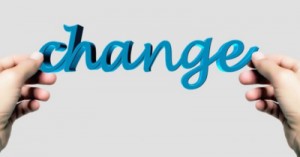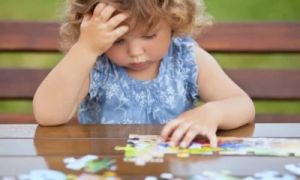“I was watching the rain because it made me feel calm. I didn’t want to talk; I just wanted to listen to the drops.” This simple statement carries more than imagination—it holds intention, emotion, and agency.
This article is a call to shift the lens. To move from about to by. From adult narration to child-led storytelling. Because when children speak, they don’t just describe—they reveal.
The Problem with Adult-Centered Documentation
Traditional documentation often centers the educator’s voice:
- “I saw Liam build a tower and smile.”
- “Ella explored the sensory tray with enthusiasm.”
These observations are well-intentioned, but they filter the child’s experience through an adult lens. They describe behavior, not meaning. They assume motivation, rather than inviting it. And they risk reducing rich, complex play into surface-level summaries.
The Power of Child Voice
When we let children speak for themselves, we unlock deeper layers of learning:
- Agency: Children become active participants in their learning, not passive subjects.
- Emotional Literacy: Expressing thoughts and feelings builds self-awareness and resilience.
- Authenticity: Their words carry raw insight—unfiltered, imaginative, and deeply personal.
- Equity: Every child’s voice matters, regardless of age, ability, or background.
In Anji Play, educators position themselves at the child’s eye level—literally and figuratively. This isn’t just a posture; it’s a philosophy. It says, "Your perspective matters." Your voice leads. Your story belongs to you.
Eye-Level Pedagogy in Practice
When we meet children where they are, we shift from interpreting play to inviting interpretation. We create space for children to reflect, analyze, and articulate their own learning journeys.
Instead of:
“I observed Sarah building a tower…”
We invite:
“I made it really tall because I wanted to see if it could touch the sky!”
This isn’t just poetic—it’s pedagogically rich. It reveals motivation, emotion, and conceptual thinking.
Eye-Level Pedagogy in Practice: Real-World Examples
Art with Intention
Adult height: “Maya used red and blue paint to make swirls.”
Child height: “I made the sky angry and the ocean happy because they were having a fight.”
Practice Tip: After art sessions, invite children to “name” their work and explain the story behind it. Use their words as the caption.
Block Play as Engineering
Adult height: “Leo stacked blocks and tested balance.”
Child height: “I made a bridge for the dinosaurs so they don’t fall into the lava!”
Practice Tip: Use photo prompts and ask, “What were you thinking when you built this?” Let their imagination lead the narrative.
Emotional Regulation Moments
Adult height: “Ava sat alone and didn’t join group time.”
Child height: “I was watching the rain because it made me feel calm. I didn’t want to talk; I just wanted to listen to the drops.”
Practice Tip: Create “I felt…” cards or journals where children can reflect on their emotional choices and sensory preferences.
Science Exploration
Adult height:“Eli mixed baking soda and vinegar and watched the reaction.”
Child height: “I made a volcano explode because I wanted to see if it could reach the moon!”
? Practice Tip: After experiments, ask “What did you discover?” and “What would you try next?” Document their hypotheses and wonderings.
Conflict Resolution
Adult height: “Sophie and Max had a disagreement over the truck.”
Child height: “I wanted the truck because it was fast, but Max said he needed it for his building. We made a rule to take turns.”
Practice Tip: Use role-play or puppet prompts to help children narrate their own problem-solving strategies.
Outdoor Inquiry
Adult height: “Children explored the garden and found insects.”
Child height: “I followed the caterpillar because I think it’s looking for its butterfly wings.”
Practice Tip: Invite children to draw or map their discoveries and explain what they think is happening. Their theories are gold.
Practical Strategies to Let Children Speak
Here are ways educators can center child voice in documentation:
- Photo Prompts with Captions: Let children describe what’s happening in their own words.
- Audio Reflections: Record post-play thoughts and transcribe them for documentation panels.
- “I Said / I Felt / I Discovered” Journals: Scaffold reflection with emotionally intelligent prompts.
- Documentation Displays: Feature child quotes as headlines, not footnotes.
- Reflection Cards: Invite children to choose a card that matches their feeling or discovery, then explain why.
These tools don’t just document—they dignify.
Beyond Compliance: Toward Connection
This approach isn’t just about better documentation—it’s about restoring joy, agency, and connection in early learning environments. It’s about shifting from “What did I see?” to “What did they feel?” From “What did they do?” to “Why did they choose it?”
It’s about honoring the child’s lived experience—not interpreting it, but amplifying it.
The child’s reflection.
The child’s analysis.
The child’s voice.
Because who better to tell their story than them?
Further Reading
Involving Children In Documentation
Guidelines For Documenting In Early Childhood Services
The Planning Cycle To Document Children's Learning
Pedagogical Documentation
Capturing Children's Voices In Early Childhood Settings
Gathering Children's Voices For The Program
Reference:
Anji Play







 As an Educator in Australia, your pay rate falls under the Children’s Services Award 2010. This award states the minimum amount that an employer can
As an Educator in Australia, your pay rate falls under the Children’s Services Award 2010. This award states the minimum amount that an employer can When working as a qualified Early Childhood Teacher (with a university degree) within a service, your rate of pay will come from the Educational Services
When working as a qualified Early Childhood Teacher (with a university degree) within a service, your rate of pay will come from the Educational Services When working as a Diploma Qualified Educator your pay rate is from the Children's Services Award 2010. This Award states your minimum rate of pay
When working as a Diploma Qualified Educator your pay rate is from the Children's Services Award 2010. This Award states your minimum rate of pay When working as a Cert 3 Qualified Educator, your pay rate is from the Children's Services Award 2010. This Award states your minimum rate of
When working as a Cert 3 Qualified Educator, your pay rate is from the Children's Services Award 2010. This Award states your minimum rate of Educational Leaders play a crucial role in their early childhood service by ensuring that the educational program aligns with best practices and supports the holistic
Educational Leaders play a crucial role in their early childhood service by ensuring that the educational program aligns with best practices and supports the holistic In early childhood education and care, ratios are more than a technicality—they are a frontline safeguard. Every child deserves responsive supervision, emotional connection, and developmental
In early childhood education and care, ratios are more than a technicality—they are a frontline safeguard. Every child deserves responsive supervision, emotional connection, and developmental Here’s a comprehensive Mobile Phone and Smart Watch Policy tailored for early childhood education and care (ECEC) services in Australia, aligned with the latest 2025
Here’s a comprehensive Mobile Phone and Smart Watch Policy tailored for early childhood education and care (ECEC) services in Australia, aligned with the latest 2025 With the new national child safety reforms kicking in on 1 September 2025, early childhood services like yours have a real opportunity to lead the
With the new national child safety reforms kicking in on 1 September 2025, early childhood services like yours have a real opportunity to lead the The Sea of Fish Challenge is a national initiative that invites children, educators, families, and communities to create and display fish artworks as a symbol
The Sea of Fish Challenge is a national initiative that invites children, educators, families, and communities to create and display fish artworks as a symbol Across the early childhood education and care sector, educators are sounding the alarm: current staffing ratios are insufficient to deliver safe, meaningful, and developmentally appropriate
Across the early childhood education and care sector, educators are sounding the alarm: current staffing ratios are insufficient to deliver safe, meaningful, and developmentally appropriate


